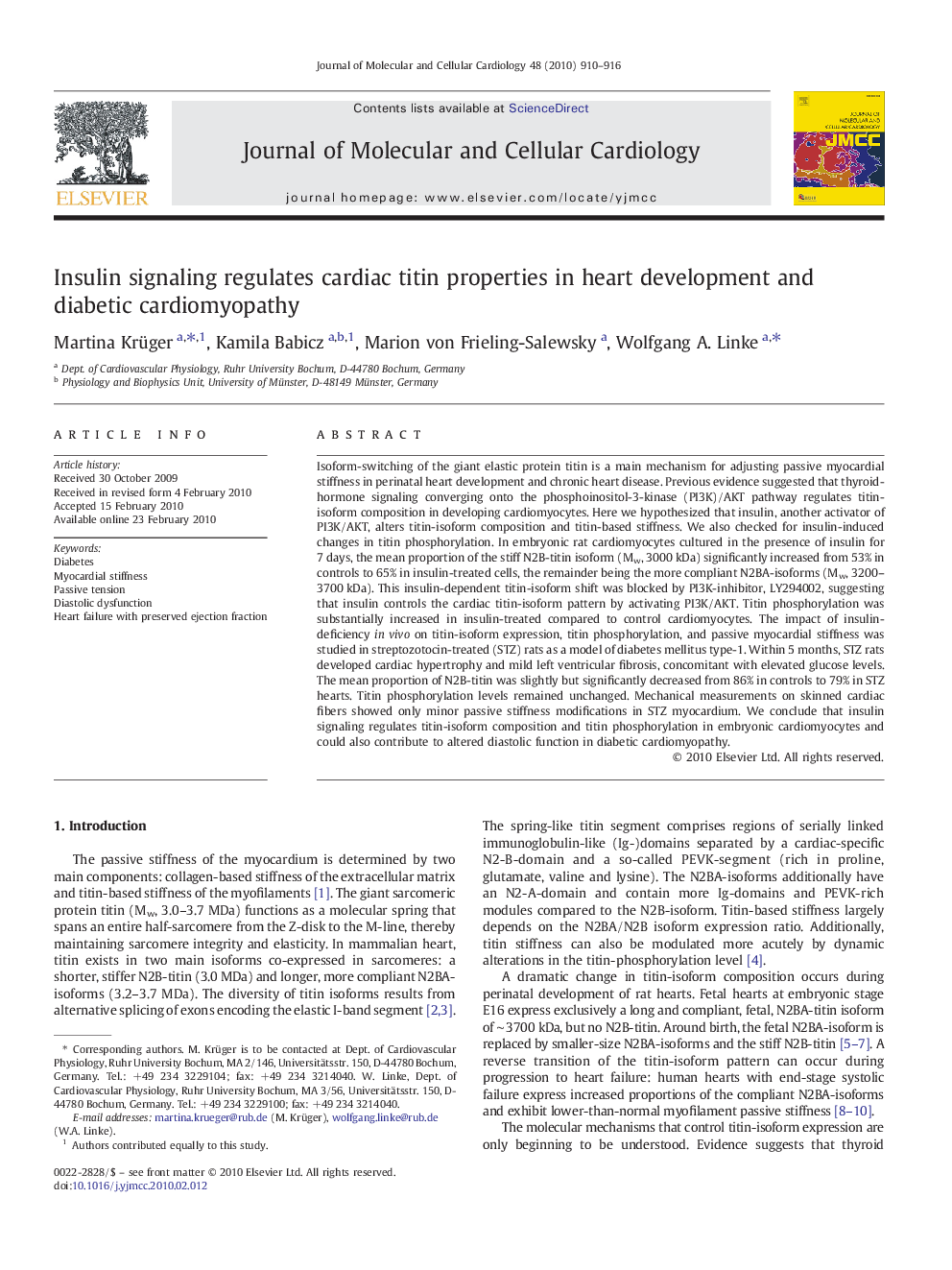| کد مقاله | کد نشریه | سال انتشار | مقاله انگلیسی | نسخه تمام متن |
|---|---|---|---|---|
| 10954100 | 1097835 | 2010 | 7 صفحه PDF | دانلود رایگان |
عنوان انگلیسی مقاله ISI
Insulin signaling regulates cardiac titin properties in heart development and diabetic cardiomyopathy
دانلود مقاله + سفارش ترجمه
دانلود مقاله ISI انگلیسی
رایگان برای ایرانیان
کلمات کلیدی
موضوعات مرتبط
علوم زیستی و بیوفناوری
بیوشیمی، ژنتیک و زیست شناسی مولکولی
بیولوژی سلول
پیش نمایش صفحه اول مقاله

چکیده انگلیسی
Isoform-switching of the giant elastic protein titin is a main mechanism for adjusting passive myocardial stiffness in perinatal heart development and chronic heart disease. Previous evidence suggested that thyroid-hormone signaling converging onto the phosphoinositol-3-kinase (PI3K)/AKT pathway regulates titin-isoform composition in developing cardiomyocytes. Here we hypothesized that insulin, another activator of PI3K/AKT, alters titin-isoform composition and titin-based stiffness. We also checked for insulin-induced changes in titin phosphorylation. In embryonic rat cardiomyocytes cultured in the presence of insulin for 7Â days, the mean proportion of the stiff N2B-titin isoform (Mw, 3000Â kDa) significantly increased from 53% in controls to 65% in insulin-treated cells, the remainder being the more compliant N2BA-isoforms (Mw, 3200-3700Â kDa). This insulin-dependent titin-isoform shift was blocked by PI3K-inhibitor, LY294002, suggesting that insulin controls the cardiac titin-isoform pattern by activating PI3K/AKT. Titin phosphorylation was substantially increased in insulin-treated compared to control cardiomyocytes. The impact of insulin-deficiency in vivo on titin-isoform expression, titin phosphorylation, and passive myocardial stiffness was studied in streptozotocin-treated (STZ) rats as a model of diabetes mellitus type-1. Within 5Â months, STZ rats developed cardiac hypertrophy and mild left ventricular fibrosis, concomitant with elevated glucose levels. The mean proportion of N2B-titin was slightly but significantly decreased from 86% in controls to 79% in STZ hearts. Titin phosphorylation levels remained unchanged. Mechanical measurements on skinned cardiac fibers showed only minor passive stiffness modifications in STZ myocardium. We conclude that insulin signaling regulates titin-isoform composition and titin phosphorylation in embryonic cardiomyocytes and could also contribute to altered diastolic function in diabetic cardiomyopathy.
ناشر
Database: Elsevier - ScienceDirect (ساینس دایرکت)
Journal: Journal of Molecular and Cellular Cardiology - Volume 48, Issue 5, May 2010, Pages 910-916
Journal: Journal of Molecular and Cellular Cardiology - Volume 48, Issue 5, May 2010, Pages 910-916
نویسندگان
Martina Krüger, Kamila Babicz, Marion von Frieling-Salewsky, Wolfgang A. Linke,